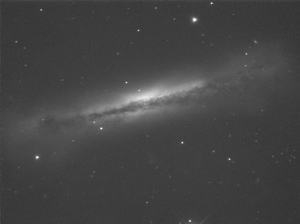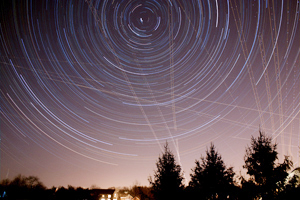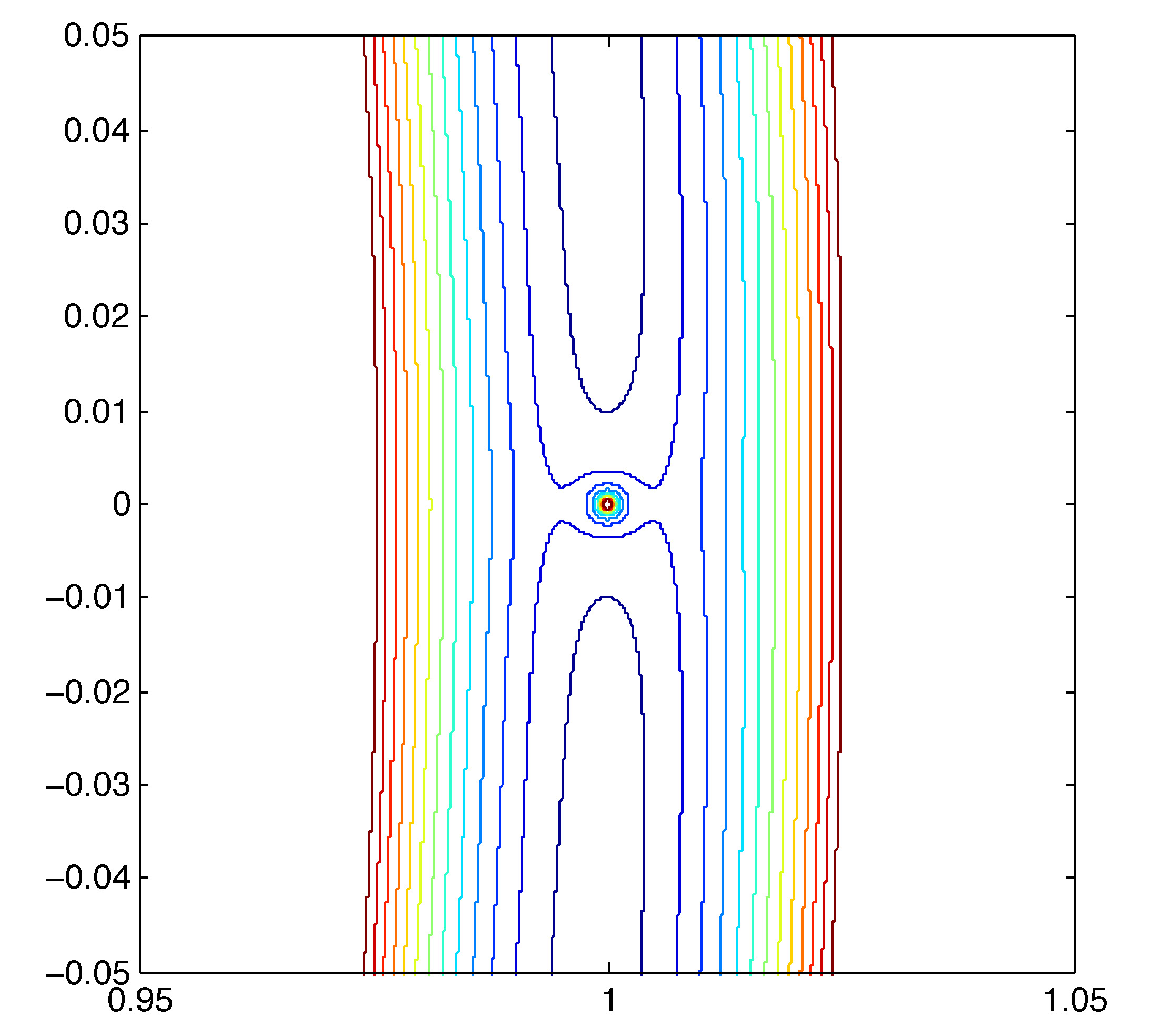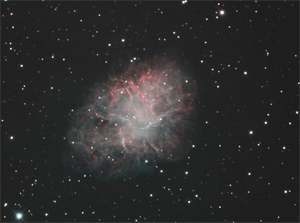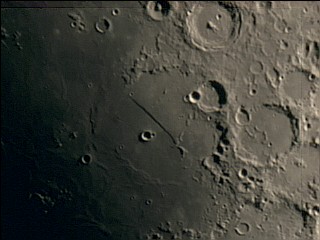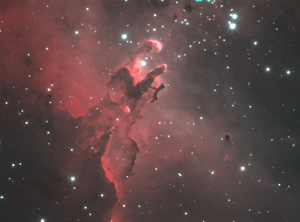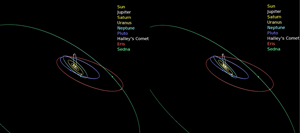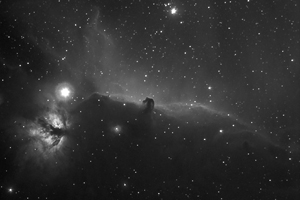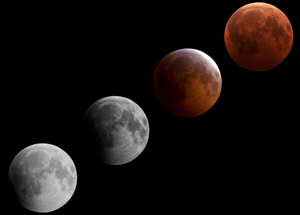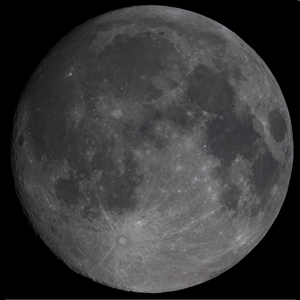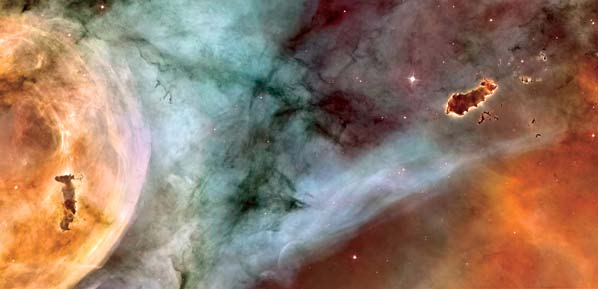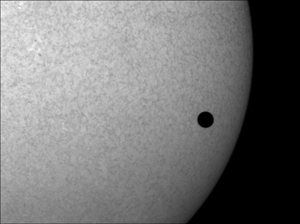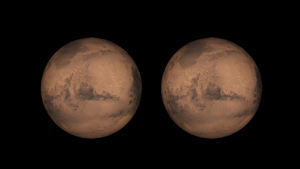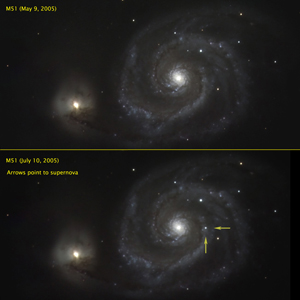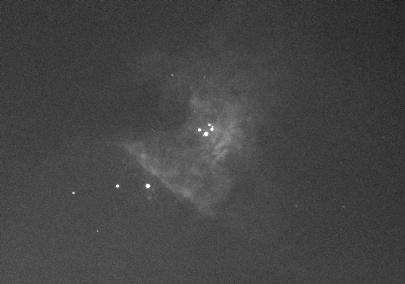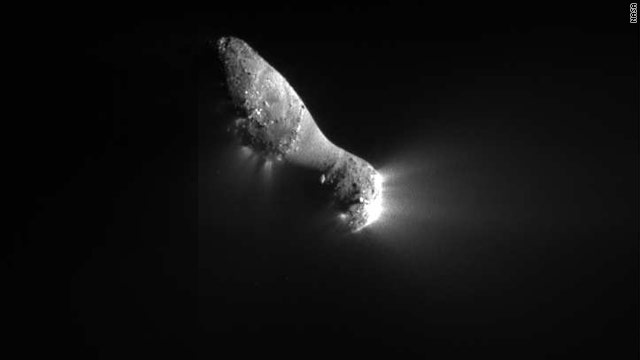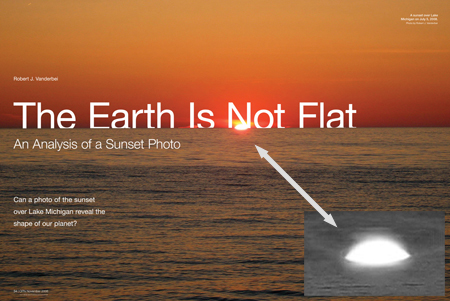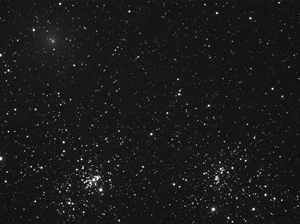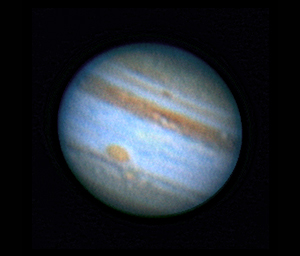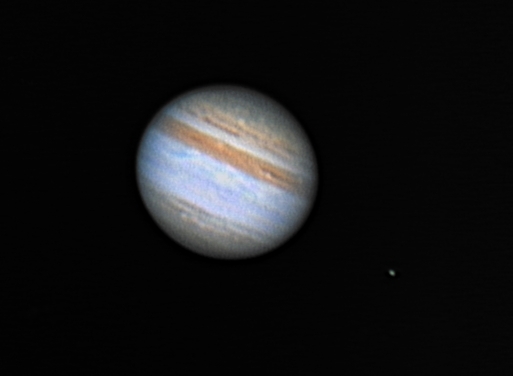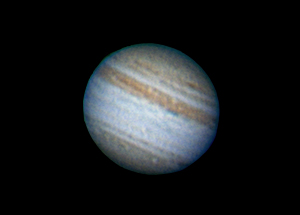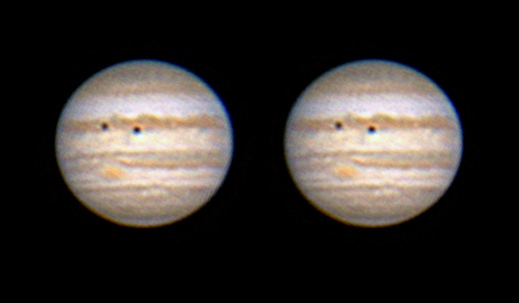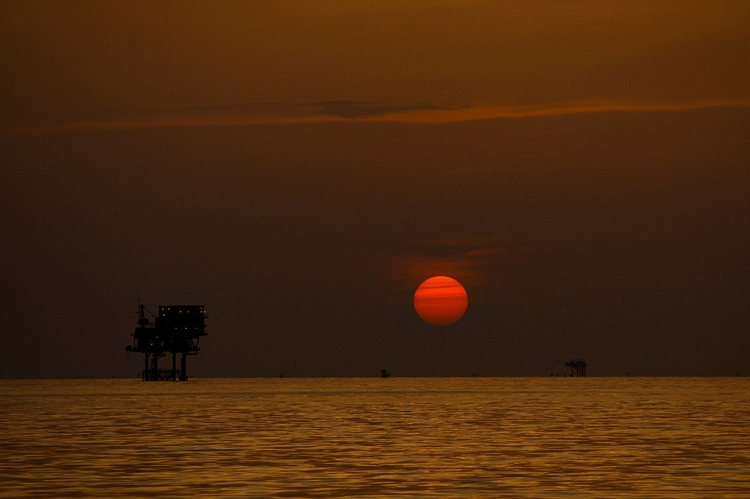
-
"a feast for the eyes and a banquet for the mind"
--Neil deGrasse Tyson
-
"the most mind-bending map to date"
--LA Times
-
"The Map of the Universe
is a stunning achievement..."--New Scientist
Henceforth, my blog posts will appear on National Geographics' Breaking Orbit blog, which is edited by Victoria Jaggard.
My first posting there, entitled Sizing Up The Supermoon, appeared on March 22, 2011.
Quasars Near NGC 3628
MAR 05, 2011
Here is a picture of the galaxy NGC 3628, which is part of a pretty trio of galaxies called the Leo Trio because they are found in the constellation Leo. A long-exposure image of this galaxy reveals some much more distant galaxies and a trio of Quasars. A Quasar, which is short for quasi-stellar radio source, is an energetic and distant galaxy with a so-called active-nucleus. Quasars are the most luminous objects in the visible universe. The quasars in this image are roughly magnitude 19.5. The faintest star the average person can see from a very dark site is magnitude 6. A magnitude 6 star is 250,000 times brighter than these quasars. The picture shown here was taken with my 10 inch reflector telescope from my home near Princeton NJ. The total exposure times was 2.5 hours.--Bob
Star Trails
FEB 25, 2011
A few nights ago, I set my Canon digital SLR camera on a tripod and aimed it out my bedroom window pointing north toward Polaris, the North Star. I attached my computer to the camera and using software that came with the camera I set it to take 2 minute exposures one after another for about 3.5 hours---100 images in total. In the morning, I stacked the images to make the long-exposure image shown here. The stars appear to circle around the north celestial pole. Of course, the stars aren't moving---we are. As the Earth turns on its axis, completing one rotation per day, the fixed stars appear as if they are turning. The other streaks of light are aircraft coming and going from local NYC airports. It was a busy night.--Bob
Horseshoes in Space
FEB 10, 2011
Imagine you and a friend, let's called her Danica, get the opportunity to drive Porsches around a circular racetrack. You are the only two on the track. Neither of you have ever done this before and you don't want to mess up. Hence, neither of you want to pass the other. So imagine yourself in one of the cars and imagine that you are driving slightly faster than Danica. Slowly you start to creep up on her from behind. As you get close, you slow down just a little bit. Danica sees you in the rear view mirror and speeds up just a little bit. Now Danica is going slightly faster than you. After several laps, she starts to catch up on you from behind. Now you speed up a little and she slows down. This continues indefinitely (or until you run out of gas). From your perspective, Danica's path seems like a horseshoe---it spans a big arc around the track but it never intersects with where you are.There are two moons of Saturn, called Janus and Epimetheus, that exhibit exactly this sort of behavior. Saturn is at the center of the racetrack. The radii of the orbits of Janus and Epimetheus are both about 150,000 km. At any moment in time, one of the two is about 50 km closer to Saturn than the other. It's on the inside lane and is therefore going faster. But, as it starts to catch up to the other moon, it begins to feel a gravitational tug forward. Counterintuitively, that forward tug accelerates the inner body but instead of going faster and crashing into the slower moon, it gets pulled into a higher orbit and ends up going slower. Similarly, the "front" moon gets pulled into a lower orbit and goes faster. The moons never pass each other---it's a good thing because they'd hit each other rather than doing a clean flyby. Such orbits are called horseshoe orbits. There are a few other examples in our Solar System.
Last week, Lissauer et al. posted a paper in which they show that there is an exoplanetary system, called KOI-730, that consists of four planets the middle two of which are in a horseshoe orbit. One should expect that the Kepler mission will discover other horseshoe orbits in the future.
Gott and Belbruno have suggested that Earth was once in a horseshoe orbit with another planet and that over many millions of years perturbations from other sources nudged these two planets until they collided in a dramatic event the result of which was the production of our Moon.
--Bob
The Rosette Nebula
FEB 05, 2011
The Rosette Nebula is a star-birth region of our Milky Way galaxy. The nebulosity is mostly deep-red Hydrogen-alpha light emitted by a cloud of interstellar hydrogen atoms. This cloud of atoms is slowly condensing to form young stars. The stars give off light, which excites the hydrogen atoms in the interstellar nebula causing the nebula to glow. It is believed that stellar winds from the bright young stars exerts pressure on the interstellar cloud causing it to compress into the shape that we see here from Earth. This picture was taken from my driveway with my 4 inch refractor using H-alpha and O-III filters to cut through the light pollution.--Bob
The Crab Nebula
JAN 30, 2011
The Crab Nebula is the remnant of a supernova explosion that took place in 1054 AD. The bright supernova was recorded by both Chinese and Arab astronomers at the time. The supernova was bright for a few weeks or months but eventually it faded. Today, it is a faint object that is hard to see visually from light polluted skies. But, the light emitted by the expanding cloud of gas consists mostly of a few specific wavelengths and therefore nice pictures can be taken even with modest equipment provided appropriate narrowband filters are used. The picture shown here was taken with my 10 inch reflecting telescope and is a combination of images taken with Hydrogen-alpha (red) and Oxygen-III (blue-green) filters.--Bob
The Straight Wall
JAN 25, 2011
The Straight Wall is a 65 mile long almost perfectly straight ridge on the Moon. It is a popular target for both visual observers and astrophotographers. The picture shown here was taken with a simple webcam attached to a small 3.5 inch Maksutov-Cassegrain telescope.--Bob
The Eagle Nebula
JAN 20, 2011
The Eagle Nebula is one of the iconic objects of the night sky made famous by the Hubble Space Telescope. But, how many realize that it is not a small object? The field of view in the image shown here is about half a Moon-diameter in wide and a little less than that in height. The nebula is an emission nebula. It shines brightly in so-called Hydrogen-alpha light, which is a very deep red color near the edge of the range of visible light detectable by human vision. But, it is fairly easy to take nice photographs of this object. The image shown here was taken by me with my 10 inch reflecting telescope. Total exposure time was two hours.--Bob
The Outer Solar System in 3D
JAN 5, 2011
Here's a stereographic view of the orbits of the outer bodies in our Solar System. View cross-eyed to see the 3D effect. When viewed in 3D, it is immediately obvious that Jupiter, Saturn, Uranus and Neptune all lie essentially in the same orbital plane but that Pluto, Halley's Comet, Eris, and Sedna are very much not in this plane.--Bob
The Horsehead and Flame Nebulae
DEC 31, 2010
The Horsehead Nebula is one of the showcase objects of the winter sky. It is located in the constellation of Orion just below the eastern-most of the three prominent stars in Orion's belt, which is the bright overexposed star center-left in this picture (north is to the left). The bright nebula just to the east, i.e. below, this bright star, aka Alnitak, is called the Flame Nebula.I have tried without success to view the Horsehead visually. The glowing background gas which makes the horsehead silhouette is very faint. In fact, the Horsehead wasn't even discovered until 1888 when Williamina Fleming noticed it on a photographic plate taken at the Harvard College Observatory.
So, it is with some pride that I was able to take the picture shown here with just a 200mm telephoto lens outfitted with a narrow-band H-alpha filter.
--Bob
Lunar Eclipse on the Winter Solstice
DEC 21, 2010
I took lots of pictures of the lunar eclipse last night.It was clear as a bell but very windy---and did I mention cold!
The first two pictures show the moon in "totality", i.e., completely within Earth's shadow. If during totality you were standing on the Moon looking at the Earth you would see the Earth with a thin glow of a sunset all around it. The atmosphere is thin and so this glow would be a very thin band. But, it would be sunset colored. It is that glow that illuminates the moon during a lunar eclipse and that is why it appears orangish.
Note that there are a few background stars in the first two pictures.
--Bob
Prelude to an Eclipse
DEC 20, 2010
Tonight, after midnight, there will be a total eclipse of the Moon. The Moon will first intersect Earth's umbra at about 1:33am and will fully emerge at about 5:00am. Totality will last from 2:40am to 3:50am. The weather for much of the US looks bleak but here on the east coast we might be lucky although blustery winds will hamper high powered photography. In preparation, I took the picture shown here last night. It's the first picture I've taken with my Canon DSLR (Rebel XSi) attached to my 10 inch reflector telescope. It's a mosaic of two frames (northern and southern halves). Each frame was a 1/80-th second exposure at 100 ISO. Click on the image to see the full-sized version.--Bob
New Scientist Review of SUTU
DEC 15, 2010
Yesterday, New Scientist ran a very nice review of our book by Marcus Chown.--Bob
Venus Crosses the Sun
DEC 10, 2010
Back on June 8, 2004, Venus passed directly in front of the Sun from the perspective of viewers here on Earth. The event lasted several hours and was already more than half over when the Sun rose on the morning of June 8. Luckily, the weather here in NJ was perfect---the skies were clear right down to the horizon. The picture shown here was taken with my 3.5" Maksutov-Cassegrain telescope and a Hydrogen-Alpha filter.The next Venus ``transit'' will take place on June 5/6, 2012. After that, there will be no more such events until the twenty-second century.
--Bob
Mars in 3D
DEC 5, 2010
Here's a stereographic view of Mars that I generated a few years ago by laying a cylindrical map of the planet on a sphere in vrml and then rending it at two different angles. View cross-eyed to see the 3D effect.--Bob
Supernova in the Whirlpool Galaxy
NOV 30, 2010
On May 9, 2005, I took a picture of the Whirlpool galaxy (M51). On June 28, 2005, it was discovered that a star in M51 had recently exploded creating a supernova (of course, at a distance of 28 million lightyears away, the actual explosion took place 28 million years ago---the light from that explosion is just getting to us now). On July 10th, I took a second picture with the exact same equipment to compare to the first. The light from the supernova is clearly evident and is marked by the two yellow arrows in the lower picture at right.The last supernova observed from a star in our own Milky Way was way back in 1604. On average, there should a supernova appearing in our Milky Way about once every 50 years---maybe once every few hundred years in our neck of the woods. In any case, we are very overdue. When the next one comes, it will be exciting.
--Bob
Jupiter and its Moons in the Daytime
NOV 25, 2010
Back in May, I took a picture of Jupiter in the middle of the day. Taking the picture was easy---the tricky part was finding Jupiter. A few details: I used a level, compass, and the Moon to polar align. Once polar aligned, I could "dial-in" Jupiter's location based on its coordinates I read off from the planetarium program on my laptop (Cartes du Ciel). Given accurate pointing, it was easy to find Jupiter in the eyepiece. I was even able to see Jupiter's cloud bands. But, I didn't notice the GRS or the Jovian moons until I stacked and sharpened the images I acquired as video using a cheap webcam.--Bob
The Orion Nebula In The Daytime
NOV 10, 2010
The Orion Nebula is one of the brightest nebulae in the night sky. But, even so, it is not bright by daytime standards. However, the light we receive from the Orion Nebula is very special. The stars in the nebula are, of course, just stars. Nothing special there. But, the glowing gas that makes the nebula interesting produces light of only a few very specific wavelengths. Most of it is so-called hydrogen-alpha (Ha) light, which is a deep red light having wavelength equal to 6563 Angstroms. By using a filter that blocks out all of the light except for those wavelengths in a very narrow band around 6563 Angstroms, it is possible to cut out almost all of the light pollution and take a beautiful picture of the nebula. Amazingly, this trick of using a narrow-band filter works so well one can take a picture of Orion in the daytime. I took the picture shown at right exactly at the moment of sunrise on September 9, 2007. Click on the picture to see more pictures taken several minutes after sunrise as well as a picture of the Sun reflecting off my neighbors window.
Narrowband Ha filters can be purchased from a few
different sources including
Astrodon,
Astronomik, and
Custom Scientific.
--Bob
Comet Encounter
NOV 5, 2010
In my blog posting on October 10th, I highlighted pictures of comet Hartley 2 that I took from my driveway a few days before as it passed almost in front of the double cluster. Unbeknownst to me, NASA's EPOXI spacecraft was on its way to a close encounter with this same comet. The encounter took place yesterday. The close-up picture of the comet, shown at right, is amazing.--Bob
Does Brightness Depend On Distance?
OCT 30, 2010
File this posting under common misconceptions:I just watched a trailer for a show about the Milky Way. It reminded me of a misconception that everyone seems to have, even the producers of the show. If you bring a distant star closer, it gets brighter. We all get that. BUT, if you bring an extended object closer, it gets bigger but it doesn't get brighter. No one seems to get that even though we experience it every day. I'm looking out my window at a white fence about a 100 yards away. It's a sunny day. I walk over to the fence for a closer look. It does not get any brighter. It just appears bigger, that's all. Armchair astronomers always seem to think things would be brighter if they were closer. It's true for stars (except the Sun) because they are unresolved point sources. But, as soon as an object is big enough to be "extended", then it is no longer true.
In the above-mentioned trailer, the voice over says if we could move our solar system to be positioned near the Orion Nebula our night skies would be bright with the light of the Orion Nebula and the video shows a bright Orion Nebula hanging over a familiar Earthly landscape. The truth is that the brightest part of the Orion Nebula is faintly visible to the naked eye and if we were close to it it would still be a faint, albeit much larger, glowing object. In fairness, I should point out an assumption I am making, namely that there is essentially no dust between us and the Orion Nebula. Dust, of course, would tend to make objects appear dimmer as they become more remote. But, I think that's usually not the case with the various nearby nebulae in our Milky Way.
Many thanks to fellow Questar owner Larry Geary for first setting me
straight on this misconception a number of years ago.
--Bob
The Earth Is Not Flat
OCT 25, 2010
A few summers ago I took the picture shown at right of a sunset over Lake Michigan. Unlike the oceans, Lake Michigan has no surf and when there is no wind, the surface can be very smooth as it was on the day I took this photo. Later when I looked at the photo I noticed that the upside-down reflected image of the Sun on the water looked slightly compressed relative to the Sun itself. At first this made no sense to me. Then, in an "Aha!" moment, I realized it is compressed because the Earth is not flat and therefore the surface of Lake Michigan is not flat. Thinking of the surface as slightly curved nicely explains the compression of the reflected image. I sat down and worked out the trigonometry and amazingly I was able to compute the diameter of the Earth just from measurements taken off from this picture and an estimate of how high I was standing above lake level when I took this photo.--Bob
How Bright Is The Daytime Sky?
OCT 20, 2010
A friend of mine recently bought a popular astronomer's toy---a gizmo called a Sky Quality Meter that measures light pollution. Point it at the nighttime sky and it tells you how bright the sky is in magnitudes per square arcsecond. Where he lives, the skies are pretty dark at night (at least for NJ). His gizmo tells him his skies are mag 19.5 per square arcsecond. He took his toy to a "dark-sky" site, also here in NJ, and it read 20.6. Not bad. Out of curiosity, I asked him: "How bright is the daytime sky?" He said he'd check. The other day he got back to me and said that the instrument was overloaded by the light and simply said that it is brighter than magnitude 0 per square arcsecond (i.e., a negative number). This made me wonder: is that right? That seems too bright to me. I've viewed Venus in the daytime through binoculars and small telescopes. Venus is brighter than the daytime sky. How bright is Venus? Well digging through old observing logs, I viewed (and photographed) Venus at noon on Oct 13, 2007 (the picture shown here was taken on a different day). At that time, Venus was magnitude -4.5, it was 29 arcseconds in diameter and its face (the face facing us) was 41.8 percent illuminated. Doing the math, Venus's illuminated face was 276 square arcseconds in apparent area. Hence, its "surface brightness" was -4.5 + 2.5*log(276) = 1.6. And, Venus was brighter than the daytime sky.
Using the picture shown here and consulting
JL
Hilton for the brightness of Venus in its crescent phase, I get that
Venus had apparent magnitude of -0.75 and illuminated surface area of 65.2 square
arcseconds so a surface brightness of -0.75 + 2.5*log(65.2) = 3.8.
On this day, I would say that the daytime sky was brighter than Venus
(the picture shown here is enhanced to make Venus appear brighter than
it actually was relative to the sky).
So, daytime skies are somewhere between 1.6 and 3.8 magnitudes
per square arcsecond. I'm guessing about magnitude 3 but I don't know
exactly.
--Bob
Near, Far, And A Comet In Between
OCT 10, 2010
On the morning of October 8, comet 103p/Hartley crossed almost in front of the famous "Double Cluster" near the constellation Cassiopeia. I grabbed about 160 30-second exposures with my CCD camera attached to my 4" refractor. Shown here is a 10-second animated gif consisting of 94 frames, spanning 55 minutes. The comet is in the upper left and moving slowly to the right. The Double Cluster spans across the bottom---a beautiful sight in any small telescope. If you click on the link you'll get to a page with a larger animation---on this one you'll notice that an artificial satellite also scooted across the field of view. The stars in the Double Cluster are many light-years away, the comet is a few light-minutes away, and the artificial satellite is just a fraction of a light-second away.--Bob
Habitable Planet Discovered Around Star Known As Gliese 581
OCT 05, 2010
Gliese 581 is a red-dwarf star about 20 lightyears from our solar system. On September 29, astronomers announced the discovery of two more planets orbiting Gliese 581---bringing the total so far to six. It appears that one of the two recently discovered planets, called Gliese 581g, might be a comfortable planet by human standards. It is about three or four times more massive than Earth and therefore probably has a solid surface to stand on. It is also at the right distance from the star so that it's likely to have a rather temperate climate---in particular, it probably has liquid water on its surface. This is the second time a planet orbiting Gliese 581 has excited astronomers. At the time of its discovery in 2007, Gliese 581c was thought to be the most Earth-like of all exo-planets discovered. But now most astronomers think that that planet is probably a bit hot for us humans. Shown here is a picture of the red-dwarf Gliese 581 that I took on May 4th, 2007. All six orbiting planets are contained in this picture although we can't make them out because they are all very close to the star itself and much much fainter.--Bob
Jupiter, Its Great Red Spot and Red Jr.
OCT 01, 2010
On September 20th, I took this picture of Jupiter with my little 3.5 inch Questar telescope and a ToUcam webcam. The South Equatorial Belt (SEB), which disappeared about 6 months ago, is still notably missing. However, the Great Red Spot (GRS) is still there and clearly evident in this picture. It looks more orange than red, but no one is suggesting a name change. There is a similar spot slightly below and to the right of the GRS. It is called officially called Oval BA but many refer to it as Red Junior.--Bob
The Moon in Enhanced Color
SEP 22, 2010
The Moon seems basically white as we look at it high in the night sky. But, it actually has a varied mineral composition that produces a variety of colors---it's just that the color variations are too subtle for our human eyes. But, one can take a color picture of the Moon and then enhance the colors in software to reveal the varying colors and hence composition of the Moon's craters and maria. In this picture, areas that are blueish are high in titanium oxide. Scientists do not yet fully understand why large areas of lava flow are rich in titanium oxide. The answer will surely contain clues about the origin of the Moon and perhaps the Earth as well.--Bob
Jupiter and Resolving Power
SEP 19, 2010
On August 31st, I took a new picture of Jupiter---best one so far with my little 3.5" reflector. On the linked page, I show both the raw unsharpened image, which is roughly how Jupiter looks visually through an eyepiece, and the same image after applying a "wavelet sharpening" technique. The result is an amazing improvement. Traditional definitions of resolution don't take into account "digital enhancement". Using the traditional definition, my image's resolution should be 1.5 arcseconds. With enhancement, the resolution improves to almost 0.5 arcseconds. (For reference, the Moon is 1800 arcseconds across.)--Bob
The Iris Nebula
Sep 06, 2010
Last night I took this picture of the Iris Nebula (NGC 7023) with my 10 inch reflector telescope and my CCD camera. The blue light is starlight from the bright central star that has reflected off from the interstellar dust. The dust reflects blue light more than other colors. The reason is the same as why our daytime sky is blue. Anyway, such nebulae are called reflection nebulae.--Bob
It's Jupiter Season Again
AUG 26, 2010
For the next few months, Jupiter will be high in the sky during nighttime hours. Currently, it is high late at night. In a couple of months it will be high in the early evening. Anyway, at 2:20am this morning, I took this picture of Jupiter using my 3.5" reflector telescope and a webcam. The air was very stable making this perhaps the best picture of Jupiter I've taken with this little telescope.--Bob
